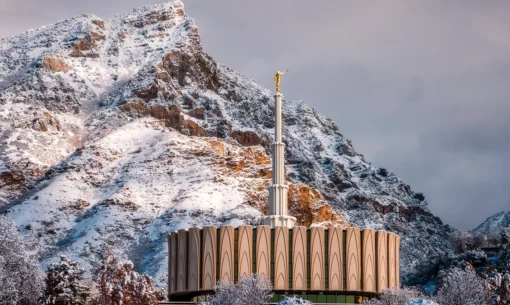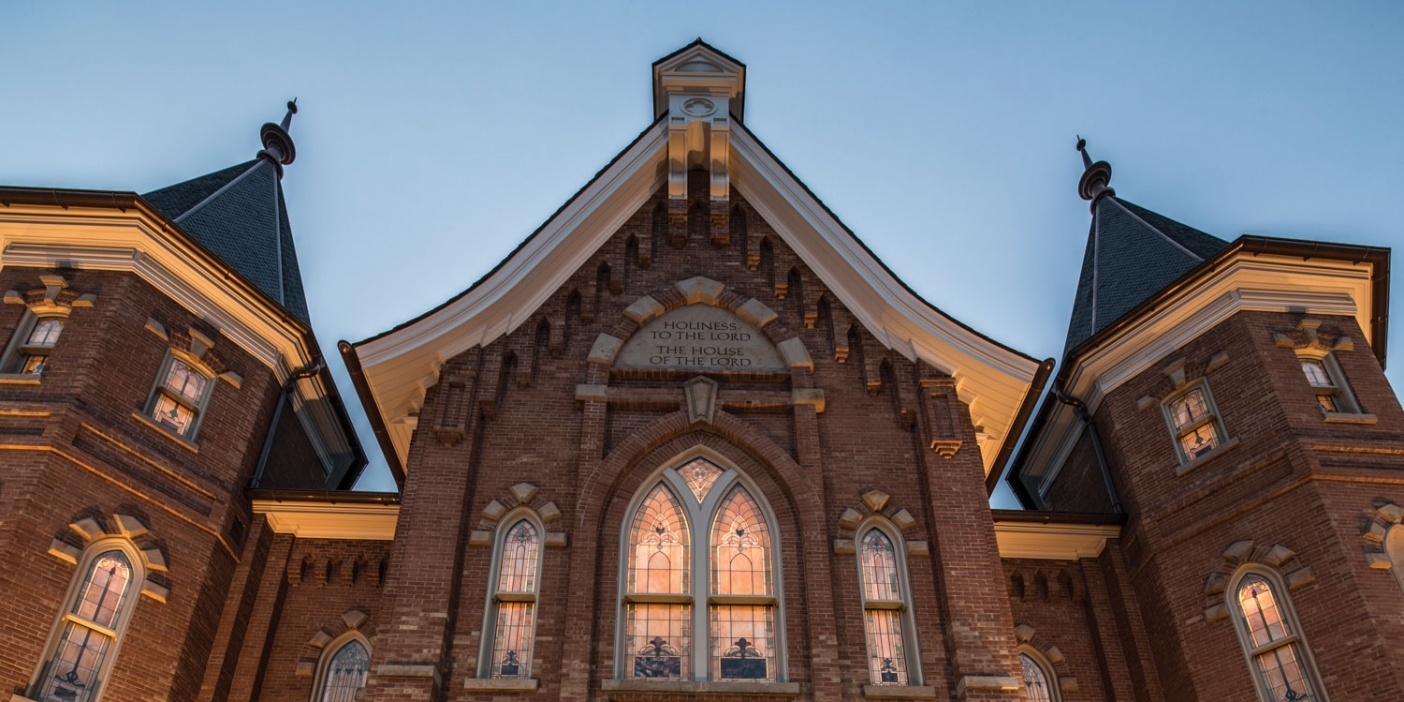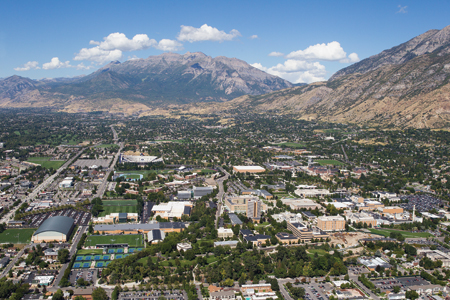Meeting Jesus in the House of the Lord
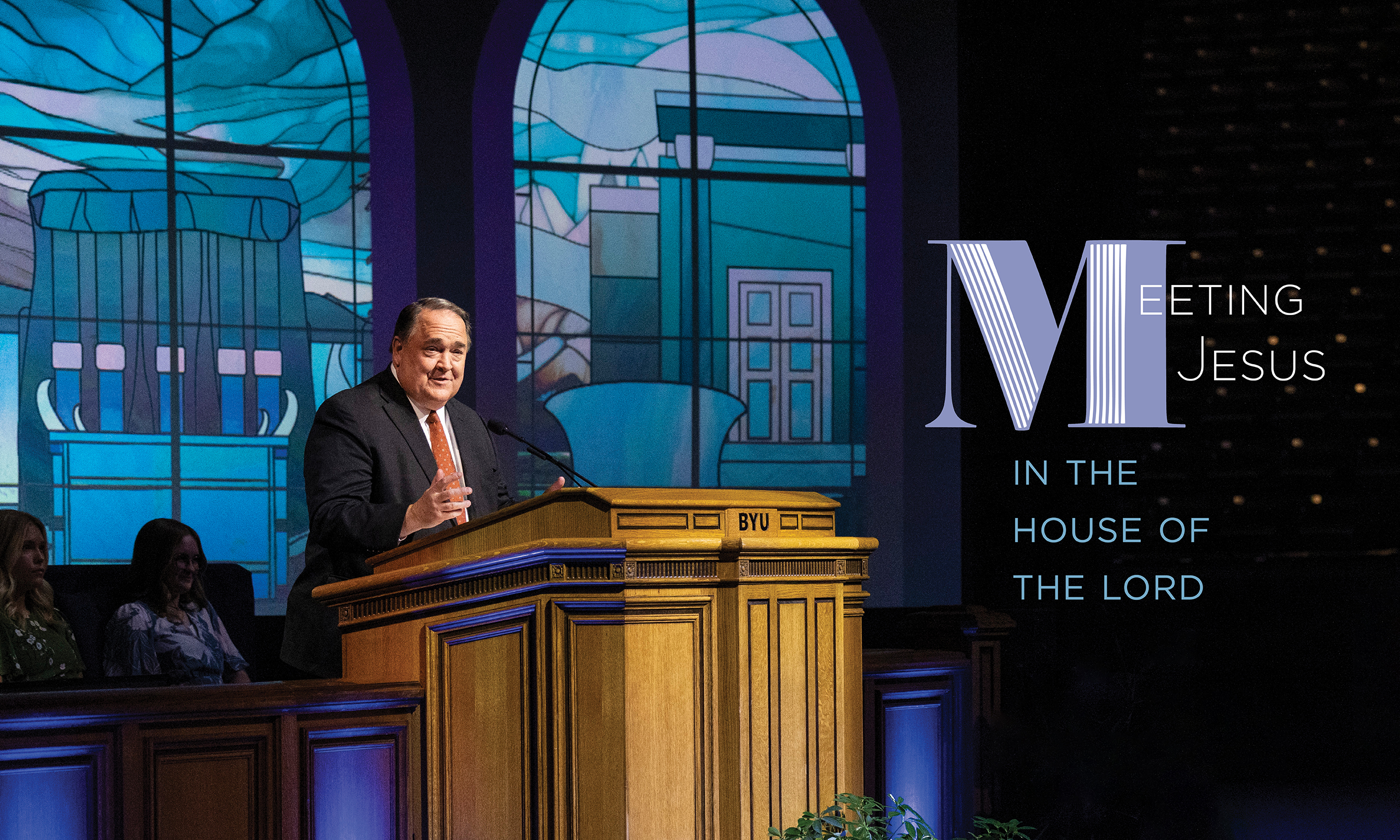
Invited guests in His house can find deep meaning and be blessed “in ways nothing else can.”
By Allen D. Haynie (BA ’82, JD ’85) in the Spring 2024 issue
Some time ago, one of my daughters sent me a video of my barely 2-year-old granddaughter singing a song as she pretended to read from a book. Sometimes children can have their tongues loosened and “speak . . . great and marvelous things” (3 Ne. 26:14). With a solid assist from the composer of the song “I Love to See the Temple,”1 my granddaughter sang and taught about covenants, obedience, the holiness of temples, the sealing authority, and eternal families. That is a rather complete description of the hoped-for results of a temple-covenant-focused life,
which is what all of us should desire because it is a life filled with both clarity and joy.
President Russell M. Nelson has described the importance of temples and all that happens in them with these words:
The temple lies at the center of strengthening our faith and spiritual fortitude because the Savior and His doctrine are the very heart of the temple. Everything taught in the temple, through instruction and through the Spirit, increases our understanding of Jesus Christ. . . .
. . . Everything we believe and every promise God has made to His covenant people come together in the temple.2
Come to Know Jesus in His House
Our Father in Heaven has always wanted and planned for a sacred space where He could instruct and make covenants with His children. Certainly we can seek and receive God’s guidance and help from virtually any location, but there is something unique about those spaces that God has both declared to be His own and sanctified by His presence.
The Garden of Eden was such a space—a space selected, planted, and beautified by God3 and a place of both instruction and covenants for Adam and Eve. Adam and Eve spoke face-to-face with the Father and the Son in the garden, were taught about the Father’s plan for His children, and were sealed together as husband and wife for eternity.4 Prior to being required to leave the garden to face the challenges of mortality and the constant attacks of the adversary, each was given a coat of skins—or, as we would call it today, a garment.5 The significance of the giving of a garment by God to His covenant children and the receiving and wearing of that garment by His covenant children should not be considered ordinary. It is a most sacred exchange.
Certainly we can seek and receive God’s guidance and help from virtually any location, but there is something unique about spaces He has declared to be his own.
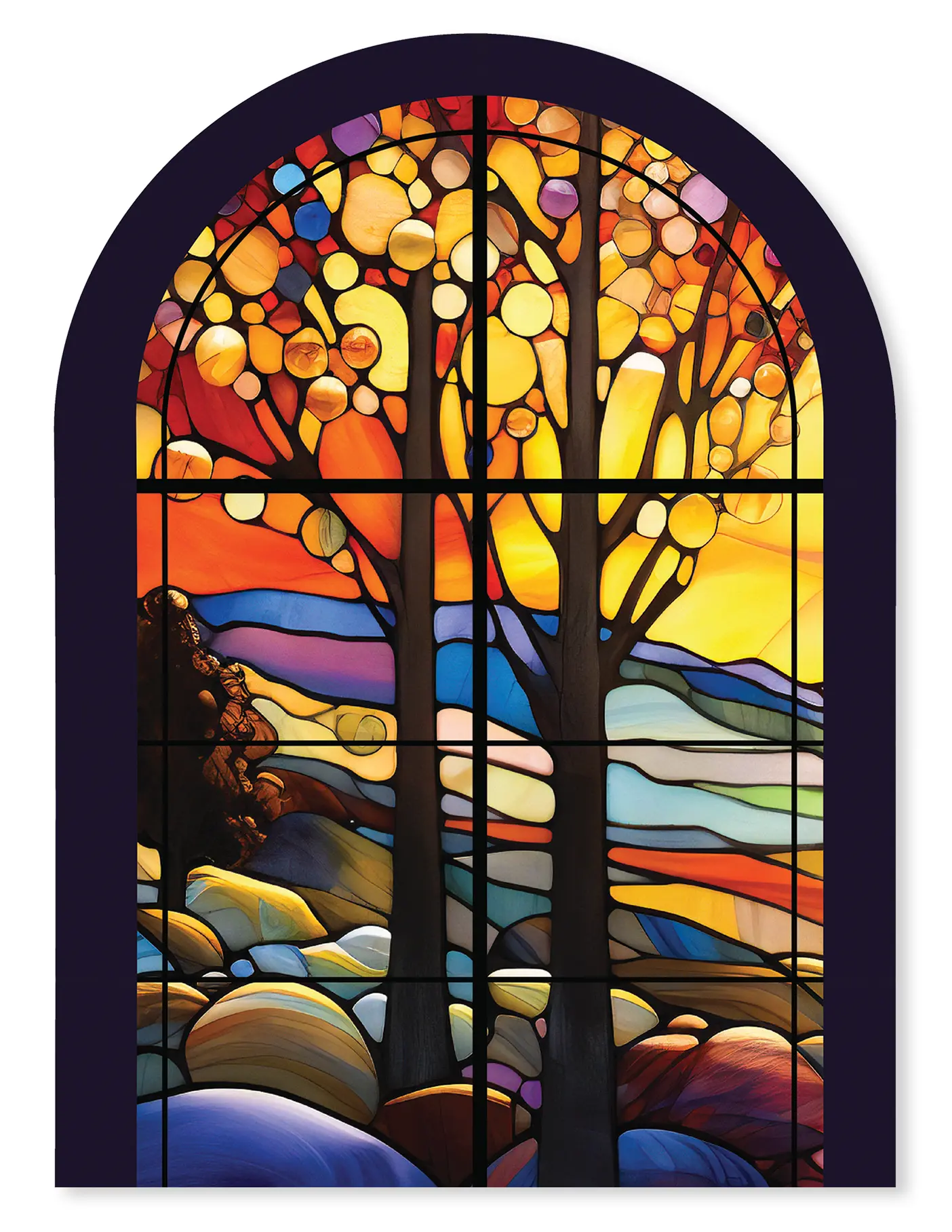
Subsequent scriptural accounts of the early history of the earth describe other locations—most frequently the tops of mountains—where the Lord personally interacted with His prophets.6 In the case of Enoch, the Lord commanded him to
get ye upon the mount Simeon.
And it came to pass that [Enoch] turned and went up on the mount; and as [he] stood upon the mount, [he] beheld the heavens open, and [he] was clothed upon with glory;
And [he] saw the Lord . . . , and he talked with [him] . . . face to face. (Moses 7:2–4)
Later, after the children of Israel had begun their journey into the wilderness, the Lord commanded Moses to build a tabernacle. The promise to Moses was that if they built the tabernacle, the Lord would “meet with [Moses] and . . . commune with [him] from above the mercy seat” (Ex. 25:22). Once again sacred clothing was prepared for those who would function as priests, including garments to be worn beneath other symbolic clothing.7 Such clothing was “put upon” (Ex. 29:5) the priests in connection with washing and anointing. After the tabernacle had been built following the Lord’s detailed instructions, “a cloud covered the tent of the congregation, and the glory of the Lord filled the tabernacle” (Ex. 40:34). In that fashion the Lord accepted the tabernacle, and it became His sacred space.
After the children of Israel inherited the promised land, the Lord approved the construction of a temple at “mount Moriah” (2 Chr. 3:1) by King Solomon (see 1 Chr. 28:6). Upon its completion “the priests brought in the ark of the covenant of the Lord . . . into the most holy place” (2 Chr. 5:7). As the people then praised the Lord, “the house was filled with a cloud, even the house of the Lord,” and “the glory of the Lord . . . filled the house of God” (2 Chr. 5:13, 14). Once again the Lord personally accepted His sacred space, His house.
In our day the Lord appeared as a resurrected and glorified being in the Kirtland Temple after its dedication and declared, “For behold, I have accepted this house, and my name shall be here; and I will manifest myself to my people in mercy in this house” (D&C 110:7).
Since “God is the same yesterday, today, and forever” (Mormon 9:9), I am confident that the Lord also accepts all His temples today. Gratefully, even though we are imperfect, we are invited as His guests into His house. He extends this invitation to us again and again, and if we accept it, it will—as promised by President Nelson—bless our lives “in ways nothing else can.”8 We should want to enter His house often because Jesus is anxious to meet with us there.
For those of you who have not yet entered the house of the Lord to make covenants and to receive your endowment, I invite you to pray and ask God if your time is now.9 If you are 18 years old, out of high school, a member for at least one year, and “desire to receive and honor sacred temple covenants throughout [your life],”10 you can prepare to receive your endowment. There is no need to wait for a mission call or a sealing. “But first [you] must be worthy. [You] should not be rushed. [You] cannot cut corners of preparation and risk the breaking of covenants [you] were not prepared to make.”11
Thankfully, the blessings available to us through Christ’s Atonement make it possible for all of us to be prepared to enter the house of the Lord. There will be opposition to any such plan because “temples are the very center of the spiritual strength of the Church. We should expect that the adversary will try to interfere with us . . . as we seek to participate in this sacred and inspired work”12 and come to know Jesus in a more intimate and sacred way in His house. I have learned over the years, however, that just attending the temple is not enough. Something needs to happen to us because of our spending time in the house of the Lord. We need to leave His house different than when we entered, but that result is not always easy to achieve.
Fully Benefit from the Temple Experience
Several years ago I read a book entitled The Temple: Where Heaven Meets Earth,13 written by the late Truman G. Madsen, who spent much of his life studying about the ordinances and covenants of the temple. In that book Brother Madsen identified three things that he felt at one time prevented him from fully benefiting from the temple experience. I feel impressed to share them with you today, especially to help those who go to the temple out of a sense of duty but who wonder if they are missing out on something.
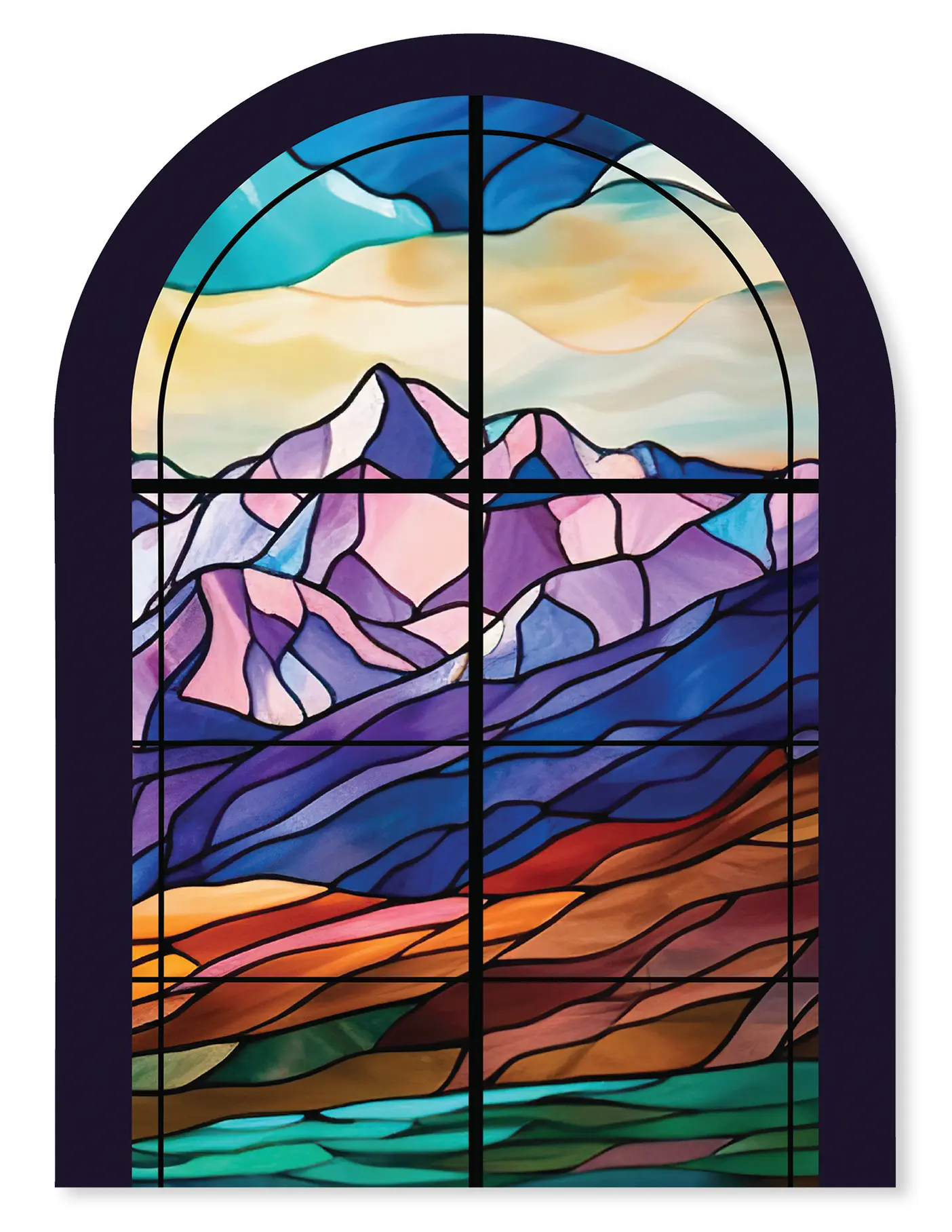
Please know that the Lord loves you for your faithfulness in coming to His house, even if you have not yet had the experience for which you have hoped, fasted, and prayed. You are in many ways like Adam when the angel asked him: “Why dost thou offer sacrifices unto the Lord? And Adam said unto him: I know not, save the Lord commanded me” (Moses 5:6). Because of Adam’s continued obedience, the Lord instructed the angel to teach Adam why he was commanded to offer sacrifice (see Moses 5:7). I believe that the Lord will treat you in a similar fashion, including sending angels if necessary to teach you. The Lord was serious when He promised “that all people who shall enter upon the threshold of the Lord’s house may feel [His] power, and . . . acknowledge that . . . it is [His] house” (D&C 109:13).
1. Study the Scriptures About the Temple
Now, back to the counsel given by Brother Madsen in his book. The first challenge he identified as preventing him from fully recognizing and receiving the unique blessings of the house of the Lord—or, as the great patriarch Jacob described it, “the gate of heaven” (Gen. 28:17)—was that he had never made the effort to “carefully read the scriptures about the temple.”14
I too have learned that the best source of insight and understanding about the temple comes from a careful, temple-focused study of the scriptures.15 For example, let me share just one scripture that might help you gain a greater appreciation for the significance of the anointing that occurs in the temple: “And [Moses] poured of the anointing oil upon Aaron’s head, and anointed him, to sanctify him” (Lev. 8:12). For those who are seeking to understand and connect with temple ordinances in a more meaningful way, spend more time reading the scriptures that talk about the temple and temple ordinances. If you do, you will be amazed what the Lord will reveal to you. After all, He is a God who has promised to reveal “all things pertaining to [His] kingdom” to His covenant children (D&C 76:7).
2. Sacrifice Your Sins on the Altars of the Temple
The second problem that Brother Madsen identified was that he was “afflicted with various kinds of unworthiness and not too anxious to change all that.”16 The Lord has declared the following: “I give unto you . . . a commandment that you . . . sanctify yourselves; yea, purify your hearts, and cleanse your hands and your feet before me, that I may make you clean” (D&C 88:74). President Henry B. Eyring has taught that “if you or I should go to the temple insufficiently pure, we would not be able to see, by the power of the Holy Ghost, the spiritual teaching about the Savior that we can receive in the temple.”17 So repentance is essential to temple revelation and temple revelation is essential to the change that we all should experience from meeting Jesus in the temple.
Weekly participation in the ordinance of the sacrament can also help us become and remain clean. I believe that approaching the sacrament with greater reverence is essential if we desire to become more worthy of temple revelation. The two covenant moments, that of the sacrament and the temple, are inextricably connected. Both point us toward the Savior and His atoning sacrifice.
If we listen to the Spirit as we partake of the sacrament, it will whisper to our spirits what it is that we need to change to benefit more fully from our time in the temple. When that happens, we have two choices. We can seek to cover our sins as Adam and Eve sought to cover their nakedness with fig leaves (see Gen. 3:7), or we can do as the father of King Lamoni did and “give away” (Alma 22:18) all those sins the Spirit has called to our attention. Being willing to sacrifice our sins—to effectively place them on the altars of the temple—can result in our having the same experience in the house of the Lord that Joseph Smith and Oliver Cowdery had in the Kirtland Temple when the Lord declared, “Behold, your sins are forgiven you; you are clean before me; therefore, lift up your heads and rejoice” (D&C 110:5).
3. Seek the Spirit to Understand What the Lord Is Trying to Teach You Through Symbols
The third obstacle Brother Madsen identified was that he “had a built-in hostility to ritual and to symbolism.”18 It is okay to admit that when we first experienced the ordinances of the temple, the ritual and symbolic aspects of the ordinances were a little confusing and may have made us feel a little uncomfortable. But that initial reaction doesn’t mean we should abandon our efforts to understand what it is the Lord is trying to teach us or, more importantly, bestow upon us. As President Nelson has taught, “If you don’t yet love to attend the temple, go more often— not less.”19 And, I would add, along with increasing your frequency, go to the temple seeking Jesus.
The Lord has declared that
this greater priesthood administereth the gospel and holdeth the key of the mysteries of the kingdom, even the key of the knowledge of God.
Therefore, in the ordinances thereof, the power of godliness is manifest. (D&C 84:19–20)
The beautiful symbolic aspects of temple ordinances can help us understand and feel the literal power of godliness inherent in those ordinances. They are not of recent vintage but rather were “ordained and prepared [by the Lord] before the foundation of the world” (D&C 128:5).20 As one apostle has taught, “God teaches with symbols; it is his favorite method of teaching.”21
If we invite the Spirit into our hearts and minds, I testify that we will discover that the ritual and symbolic aspects of the temple ordinances are in fact very familiar to us, and we will recognize that the power of godliness that flows into our lives as we honor them ensures our ability to return and dwell in the presence of our Father in Heaven. As President Nelson has counseled, “The temple endowment was given by revelation. Thus, it is best understood by revelation, vigorously sought with a pure heart.”22
4. Seek Jesus While Participating in Temple Ordinances
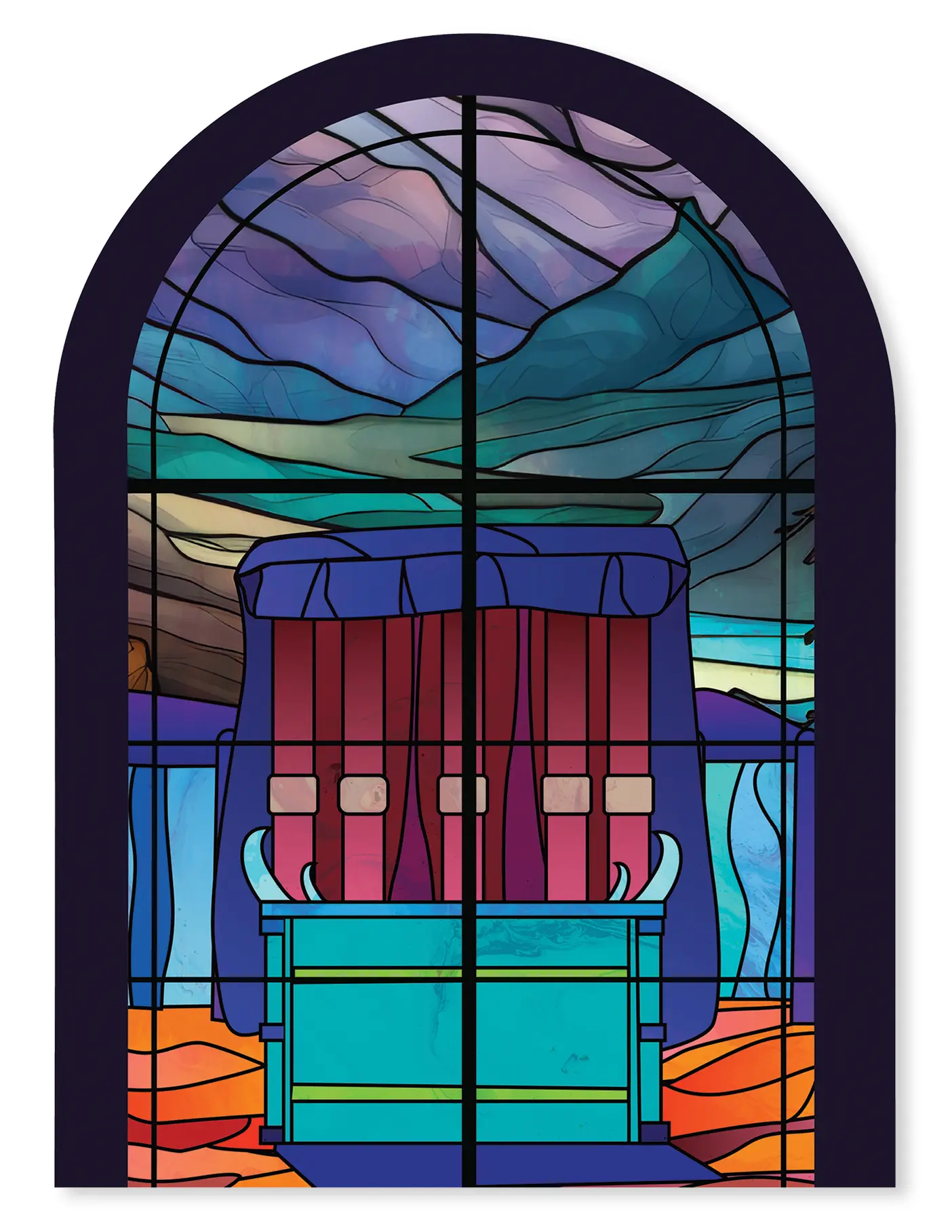
I would like to add my own fourth mistake that too many of us make when we come to worship in the temple. We too often ignore the reality that all the symbolism in the temple points us toward Jesus Christ, His Atonement, and His role in “bring[ing] to pass the immortality and eternal life of man” (Moses 1:39).
Many of the challenges people have with not feeling what they want to feel in the temple stem from their failure to seek Jesus while participating in temple ordinances. He is why we come to the temple. He is who our Father in Heaven desires us to meet in the temple. He is at the center of every symbol, every ordinance, every covenant, and every hoped-for blessing in the temple. Seeking Jesus in the temple enables us to understand why we are in the temple and why we should return.
In his epistle to the Hebrews, Paul declared the following with reference to gaining access to the most holy part of the ancient temple:
Having therefore, brethren, boldness to enter into the holiest by the blood of Jesus,
By a new and living way, which he hath consecrated for us, through the veil, that is to say, his flesh. (Heb. 10:19–20)23
Seeking Jesus in the temple enables us to understand why we are in the temple and why we should return.
John provided further clarity to this scripture when he quoted Jesus as stating that “no man cometh unto the Father, but by me” (John 14:6). When we stand at the veil of the temple, He who is our advocate with the Father symbolically stands between us and the Father,24 saying:
Father, behold the sufferings and death of him who did no sin, in whom thou wast well pleased; behold the blood of thy Son which was shed, the blood of him whom thou gavest that thyself might be glorified;
Wherefore, Father, spare these my brethren that believe on my name, that they may come unto me and have everlasting life. (D&C 45:4–5)
Faithfully Honor and Wear the Temple Garment
Anciently, sacred clothing was worn to help God’s covenant children to “remember all the commandments of the Lord, and do them; and that ye seek not after your own heart and your own eyes” (Num. 15:39). It is no different today. What an amazing, sacred moment it is to be given a garment while in the house of the Lord, with all its symbolic meaning—the most important of which is a remembrance of the Savior’s sacrifice in the Garden of Gethsemane and on the cross and His glorious Resurrection. “The temple garment is a physical reminder of sacred promises [we] have made with [our] Heavenly Father, and it reminds [us] of the blessings [we] can receive if [we] honor [our] commitments.”25 The garment also helps us to honor the sacramental covenant to “always remember him and keep his commandments which he has given [us]; that [we] may always have his Spirit to be with [us]” (D&C 20:77).
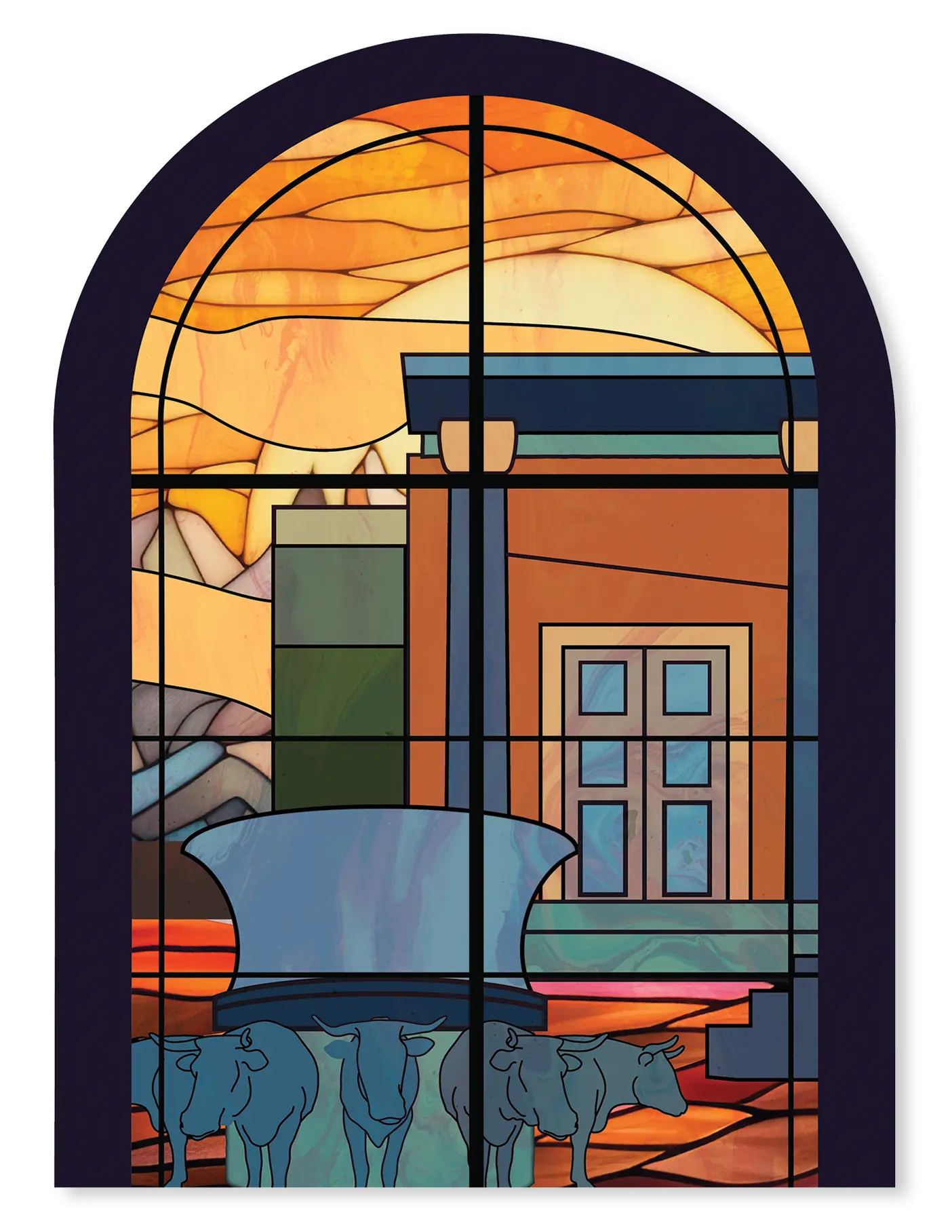
In the temple you can receive power to withstand and overcome the spiritual attacks of the adversary through the making and keeping of covenants.
President Nelson recently taught something very profound about the temple garment that he gave me permission to share with you:
Your garment is symbolic of the veil [of the temple]; the veil is symbolic of the Lord Jesus Christ. So when you put on your garment, you may feel that you are truly putting upon yourself the very sacred symbol of the Lord Jesus Christ—His life, His ministry, and His mission, which was to atone for every daughter and son of God.26
We find Jesus in the temple, in every aspect of it, and we find Him in the symbolism of the garment. In wearing the garment, we declare to God that we rejoice in having Jesus’s name placed upon us in His holy house (see D&C 109:26), and we remember Him always.27
That is why “the garment should not be removed for activities that can reasonably be done while wearing the garment. It should not be modified to accommodate different styles of clothing.”28 That is why “the fundamental principle ought to be to wear the garment and not to find occasions to remove it.”29 That is why “it is a sacred privilege to wear the temple garment. Doing so is an outward expression of an inner commitment to follow the Savior Jesus Christ.”30 That is why “when members are faithful to their covenants and wear the garment properly throughout their lives, it also serves as a protection.”31
In the apocryphal book of 2 Enoch,32 the following account is found:
And the Lord, with his own mouth, called to me, “Be brave, Enoch! Don’t be frightened! Stand up, and stand in front of my face forever.” And Michael, the Lord’s greatest archangel, lifted me up and brought me in front of the face of the Lord. . . .
The Lord said to Michael, “Take Enoch, and extract (him) from the earthly clothing. And anoint him with the delightful oil, and put (him) into the clothes of glory.” And Michael extracted me from my clothes. He anointed me with the delightful oil. . . . And I gazed at all of myself, and I had become like one of the glorious ones.33
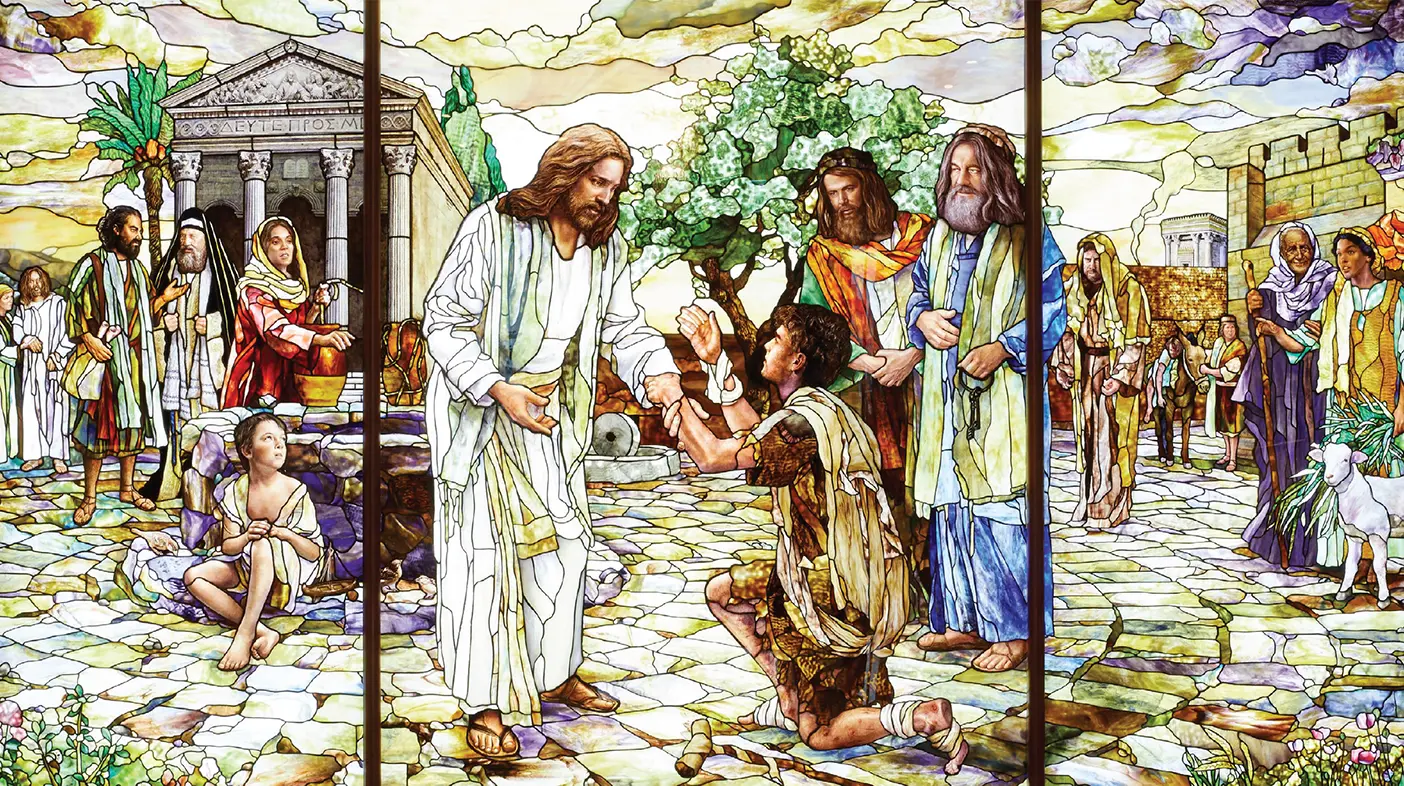
That is the hope I have for all of you. In the temple you can become “like one of the glorious ones.” In the temple you can receive power to withstand and overcome the spiritual attacks of the adversary through the making and keeping of covenants. In the temple, you—like Adam and Eve, Enoch, and the priests in the ancient temples—can receive a garment, not just any garment but rather the garment of the holy priesthood. And in the temple you can meet Jesus.
President Nelson recently taught that “every time a temple is dedicated, more light comes into the world.”34 I do not believe that President Nelson was talking about the lighting on the exterior of the temple. I think he was talking about us, God’s covenant children, because each time we come to the temple worthily, we receive and leave with more light, and “[h]e that receiveth light, and continueth in God, receiveth more light; and that light groweth brighter and brighter until the perfect day” (D&C 50:24).
I witness that as we prepare and purify ourselves, Jesus will reveal Himself to us in His house in powerful and personal ways.
I witness that God is eager to enter into a covenant relationship with us in His temple, one that will, as President Nelson has testified, change “our relationship with Him forever” and bless “us with an extra measure of [His] love and mercy.”35 I witness that as we prepare and purify ourselves, Jesus will reveal Himself to us in His house in powerful and personal ways. I witness that the consistent honoring and wearing of the temple garment will enable us to remember Jesus, to be “armed with righteousness and with the power of God in great glory” (1 Ne. 14:14), and to obtain the spiritual protection needed to increase our hope of one day becoming joint heirs with Him in our Father’s kingdom (see Rom. 8:16–17).36
I so testify as directed by the Holy Ghost and in the name of Jesus Christ, amen.
This text is condensed from a devotional address delivered on Oct. 10, 2023, by Allen D. Haynie, a General Authority Seventy of The Church of Jesus Christ of Latter-day Saints. Find the full text, audio, and video at speeches.byu.edu.
Feedback Send comments on this article to magazine@byu.edu.
NOTES
- Janice Kapp Perry, “I Love to See the Temple,” Songbook, p. 95.
- Russell M. Nelson, “The Temple and Your Spiritual Foundation,” Liahona, November 2021; emphasis in original.
- See Genesis 2:8, 15–18.
- 4. See Genesis 2:21–24; Moses 3:20–25.
Marriage as established in the beginning was an eternal covenant. The first man and the first woman were not married until death should part them, for at that time death had not come into the world. The ceremony on that occasion was performed by the Eternal Father himself whose work endures forever. [Joseph Fielding Smith, Doctrines of Salvation, comp. Bruce R. McConkie, 3 vols. (Salt Lake City: Bookcraft, 1954–56), 2:71]
See also Bruce R. McConkie, MD, s.v. “Eve,” 242. “Adam and Eve were married by God before there was any death in the world. They had an eternal marriage” (Gospel Principles [Salt Lake City: Church of Jesus Christ, 2009], p. 219; see chapter 38, “Eternal Marriage”). - See Genesis 3:21; Moses 4:27.
The Targums (Aramaic paraphrases of the Old Testament) teach that these garments were “precious garments” or “glorious garments” or “garments of honor.” Rabbi Eleazer called them “coats of glory.” A rabbinic source asks: “And what were those garments?” The answer is, “The vestments of the High Priesthood, with which the Almighty clothed them because Adam was the world’s first-born.” [Evelyn T. Marshall, in Daniel H. Ludlow, ed., Encyclopedia of Mormonism, 5 vols. (New York: Macmillan, 1992), s.v. “garments,” 2:534; available online at eom.byu.edu; citing Menahem M. Kasher, Encyclopedia of Biblical Interpretation: (Torah Shelemah), a Millennial Anthology, Genesis: vol. 1, trans. Harry Freedman (New York: American Biblical Encyclopedia Society, 1953), p. 137, also p. 138] - “The brother of Jared . . . went forth unto the mount. . . . And . . . the Lord showed himself unto him” (Ether 3:1, 13). “And [Abraham] removed . . . unto a mountain . . . : and there he builded an altar unto the Lord, and called upon the name of the Lord” (Genesis 12:8). “Moses was caught up into an exceedingly high mountain, And he saw God face to face, and he talked with him, and the glory of God was upon Moses” (Moses 1:1–2).
- “And thou shalt embroider the coat of fine linen” (Exodus 28:39). “The Hebrew of this verse may also be rendered: ‘And thou shalt weave a shirt-like undergarment of fine white cloth’” (Alonzo L. Gaskill, Sacred Symbols: Finding Meaning in Rites, Rituals, and Ordinances [Springville, Utah: Bonneville Books, 2011], p. 161). “And the priest shall put on his linen garment, and his linen breeches shall he put upon his flesh” (Leviticus 6:10; see also Exodus 28:42).
- Russell M. Nelson, “Focus on the Temple,” Liahona, November 2022.
- Joseph Fielding Smith asked:
“When the Lord offers us these great blessings, are we justified in saying, ‘It is all right, we want them, but we want to put them off just as long as we can before we receive them, so that we can live as the world lives’?” . . .
I believe that a young man or a young woman should seek after these blessings in the temple, and just as soon as they are old enough to understand the meaning of temple ordinances, they should have them. Moreover, they should not go to the temple until they do have a testimony of the truth and a knowledge of the gospel, no matter how old they may be. [Doctrines of Salvation, 2:254–55; emphasis in original] - “Deciding When to Receive the Endowment,” General Handbook: Serving in The Church of Jesus Christ of Latter-day Saints, August 2022 (Salt Lake City: Church of Jesus Christ, 2022), 27.2.2 (p. 230).
- Russell M. Nelson, “Personal Preparation for Temple Blessings,” Ensign, May 2001.
- Boyd K. Packer, “The Holy Temple,” Ensign, February 1995.
- See Truman G. Madsen, The Temple: Where Heaven Meets Earth (Salt Lake City: Deseret Book, 2008).
- Madsen, The Temple, p. 12.
- President Russell M. Nelson has taught:
Spiritual preparation is enhanced by study. I like to recommend that members going to the temple for the first time read short explanatory paragraphs in the Bible Dictionary, listed under seven topics: “Anoint,” “Atonement,” “Christ,” “Covenant,” “Fall of Adam,” “Sacrifices,” and “Temple.” Doing so will provide a firm foundation.
One may also read in the Old Testament and the books of Moses and Abraham in the Pearl of Great Price. Such a review of ancient scripture is even more enlightening after one is familiar with the temple endowment. Those books underscore the antiquity of temple work. [Nelson, “Personal Preparation”; emphasis in original]
“Everything we learn in the holy places, the temples, is based on the scriptures” (Ezra Taft Benson, TETB, p. 245). - Madsen, The Temple, p. 12.
- Henry B. Eyring, “I Love to See the Temple,” Liahona, May 2021.
- Madsen, The Temple, p. 12.
- Nelson, “The Temple and Your Spiritual Foundation.”
- “These sacred temple rites are ancient. To me that antiquity is thrilling and another evidence of their authenticity” (Russell M. Nelson, “Becoming Exemplary Latter-day Saints,” Ensign, November 2018).
- Orson F. Whitney, “Latter-day Saint Ideals and Institutions,” Improvement Era, August 1927, 861.
- Russell M. Nelson, “Prepare for the Blessings of the Temple,” Ensign, October 2010.
- Specifically, I invite you to reflect upon those moments when you stand at the veil of
the temple. I want you to know what the Apostle Paul taught about the veil of the temple.
This is recorded in the book of Hebrews, chapter 10 starting at verse 19. [Russell M.
Nelson, “Enter into Thy Closet,” seminar for new mission leaders, Missionary Training
Center, Provo, Utah, June 26, 2022] - Donald W. Parry and Jay A. Parry wrote:
Entering the veil of the tabernacle or the temple veil that divided the holy of holies from the holy place is a ritual that also teaches us of Jesus’ atonement. The veil that separated humankind from God’s presence hung in the holy of holies. . . . This veil, explained Paul, symbolizes Jesus Christ’s flesh (Heb. 9:3; 10:19–20). The temple veil stood between humans and their entrance into the temple’s holiest place; in the same way, the Savior stands between the celestial kingdom and us. [Symbols and Shadows: Unlocking a Deeper Understanding of the Atonement (Salt Lake City: Deseret Book, 2009), p. 33] - “What Is the Temple Garment?” Church of Jesus Christ,
churchofjesuschrist.org/tools/what-is-the-temple-garment. - Nelson, “Enter into Thy Closet.”
- President Emily Belle Freeman, the Young Women general president of the Church, recently taught in a general conference address that our decision to wear the temple garment “depends on what degree of relationship [we] want to experience with Jesus Christ” (“Walking in Covenant Relationship with Christ,” Liahona, November 2023).
- “Wearing and Caring for the Garment,” General Handbook (August 2022), 38.5.5
(p. 395). - First Presidency letter, Oct. 10, 1988; quoted in Nelson, “Prepare for the Blessings of the Temple.”
- “Wearing and Caring for the Garment,” General Handbook (August 2022), 38.5.5 (p. 395).
- “The Endowment,” General Handbook (August 2022), 27.2 (p. 229).
- In section 91 of the D&C, the Lord revealed to the Prophet Joseph Smith that “there are many things contained [in the Apocrypha, or ancient sacred writings that are not canonized] that are true” and that those who are “enlightened by the Spirit shall obtain benefit therefrom” (D&C 91:1, 5).
- 2 Enoch 22:5–6, 8–10, in James H. Charlesworth, ed., The Old Testament Pseudepigrapha, Volume 1: Apocalyptic Literature and Testaments (Garden City, New York: Doubleday, 1983), p. 137, p. 139.
- Russell M. Nelson, Church devotional broadcast, Nov. 13, 2022; quoted in Sydney Walker, “President Nelson: ‘We Will Build Temples. You Will Build People Prepared to Enter Them,’” Leaders and Ministry, Church News, Nov. 13, 2022,
thechurchnews.com/leaders/2022/11/13/23457052/president-nelson-nevada-devotional-temple-preparation-president-ballard. “Every time a temple is dedicated to the Lord the darkness pushes farther back, prison doors are opened, and light comes into the world” (Spencer W. Kimball, TSWK, p. 534). - Russell M. Nelson, “The Everlasting Covenant,” Liahona, October 2022.
- “And he that receiveth my Father receiveth my Father’s kingdom; therefore all that my Father hath shall be given unto him” (D&C 84:38).


